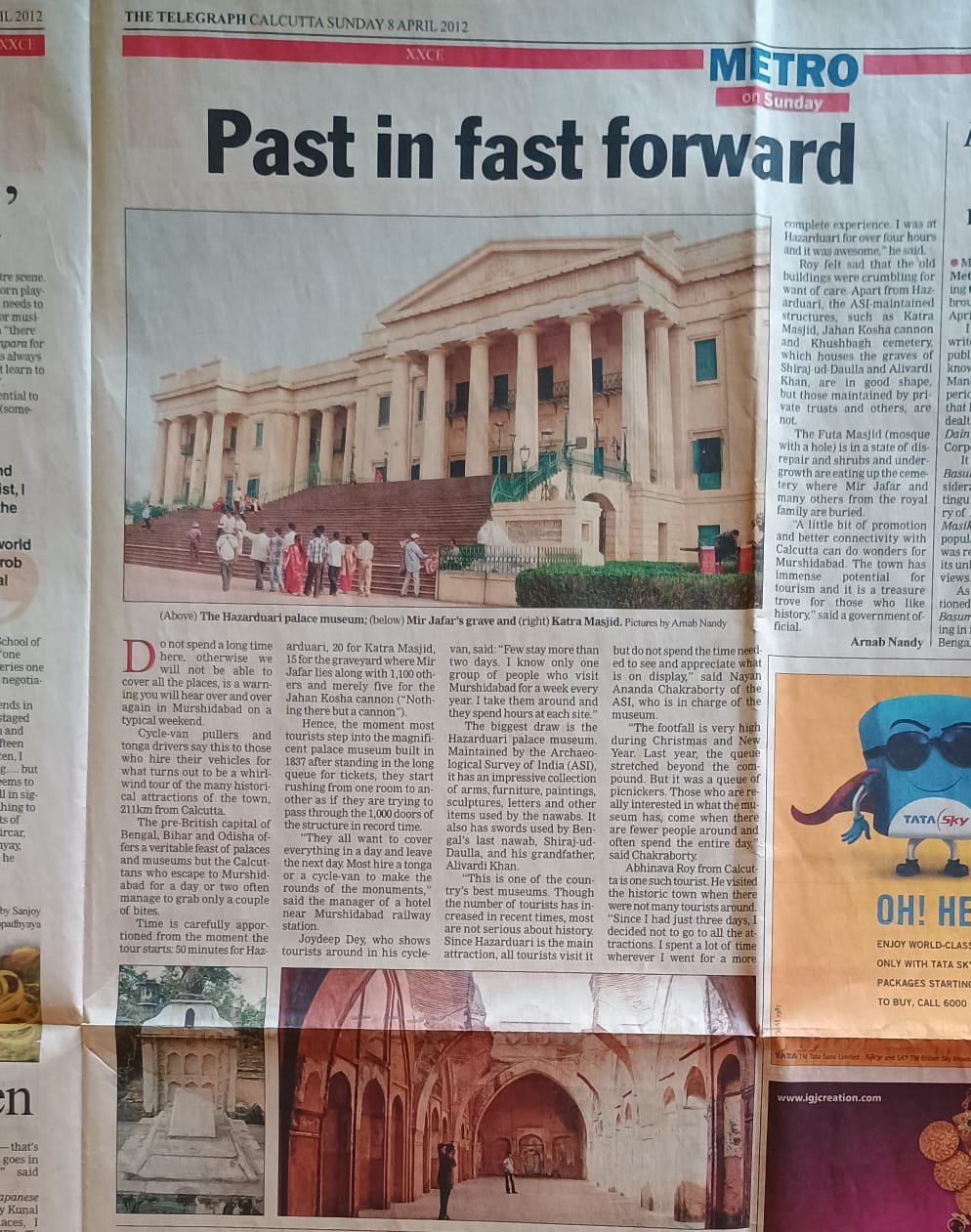Do not spend a long time here, otherwise we will not be able to cover all the places, is a warning you will hear over and over again in Murshidabad on a typical weekend.
Cycle-van pullers and tonga drivers say this to those who hire their vehicles for what turns out to be a whirl- wind tour of the many historical attractions of the town, 211km from Calcutta.
The pre-British capital of Bengal, Bihar and Odisha offers a veritable feast of palaces and museums but the Calcuttans who escape to Murshidabad for a day or two often manage to grab only a couple of bites.
Time is carefully apportioned from the moment the tour starts: 50 minutes for Hazarduari, 20 for Katra Masjid, 15 for the graveyard where Mir Jafar lies along with 1,100 others and merely five for the Jahan Kosha cannon (“Nothing there but a cannon”).
Hence, the moment most tourists step into the magnificent palace museum built in 1837 after standing in the long queue for tickets, they start rushing from one room to another as if they are trying to pass through the 1,000 doors of the structure in record time.
“They all want to cover everything in a day and leave the next day. Most hire a tonga or a cycle-van to make the rounds of the monuments,” said the manager of a hotel near Murshidabad railway station.
Joydeep Dey, who shows tourists around in his cycle-van, said: “Few stay more than two days. I know only one group of people who visit Murshidabad for a week every year. I take them around and they spend hours at each site.”
The biggest draw is the Hazarduari palace museum. Maintained by the Archaeological Survey of India (ASI), it has an impressive collection of arms, furniture, paintings, sculptures, letters and other items used by the nawabs. It also has swords used by Bengal’s last nawab, Shiraj-ud- Daulla, and his grandfather, Alivardi Khan.
“This is one of the country’s best museums. Though the number of tourists has increased in recent times, most are not serious about history. Since Hazarduari is the main attraction, all tourists visit it but do not spend the time needed to see and appreciate what is on display,” said Nayan Ananda Chakraborty of the ASI, who is in charge of the museum.
“The footfall is very high during Christmas and New Year. Last year, the queue stretched beyond the compound. But it was a queue of picnickers. Those who are really interested in what the museum has, come when there are fewer people around and often spend the entire day.” said Chakraborty.
Abhinava Roy from Calcutta is one such tourist. He visited the historic town when there were not many tourists around. “Since I had just three days, I decided not to go to all the attractions. I spent a lot of time wherever I went for a more complete experience. I was at Hazarduari for over four hours and it was awesome,” he said.
Roy felt sad that the old buildings were crumbling for want of care. Apart from Hazarduari, the ASI-maintained structures, such as Katra Masjid, Jahan Kosha cannon and Khushbagh cemetery, which houses the graves of Shiraj-ud-Daulla and Alivardi Khan, are in good shape, but those maintained by private trusts and others, are not.
The Futa Masjid (mosque with a hole) is in a state of disrepair and shrubs and undergrowth are eating up the cemetery where Mir Jafar and many others from the royal family are buried.
“A little bit of promotion and better connectivity with Calcutta can do wonders for Murshidabad. The town has immense potential for tourism and it is a treasure trove for those who like history,” said a government official.
